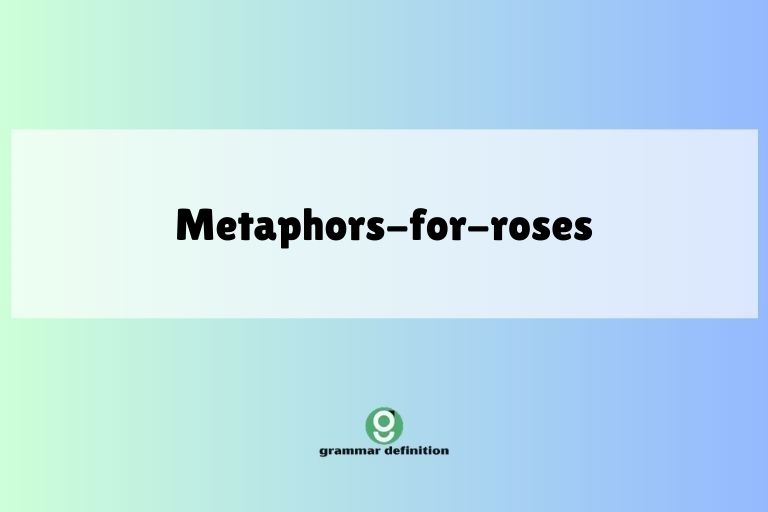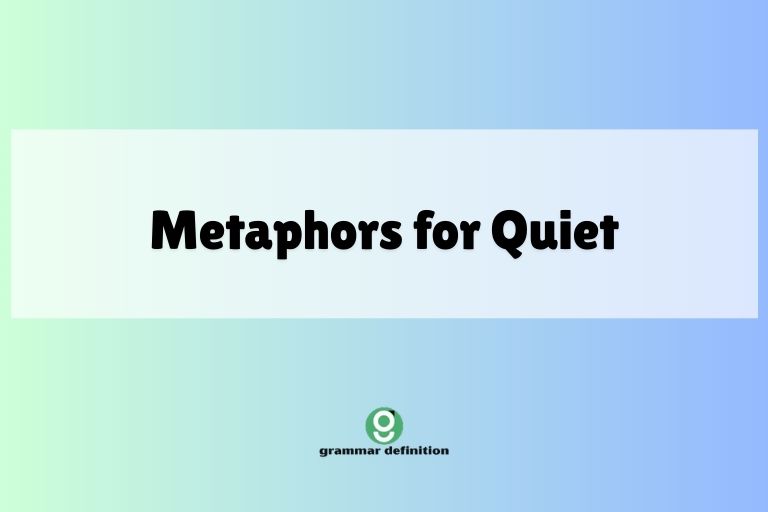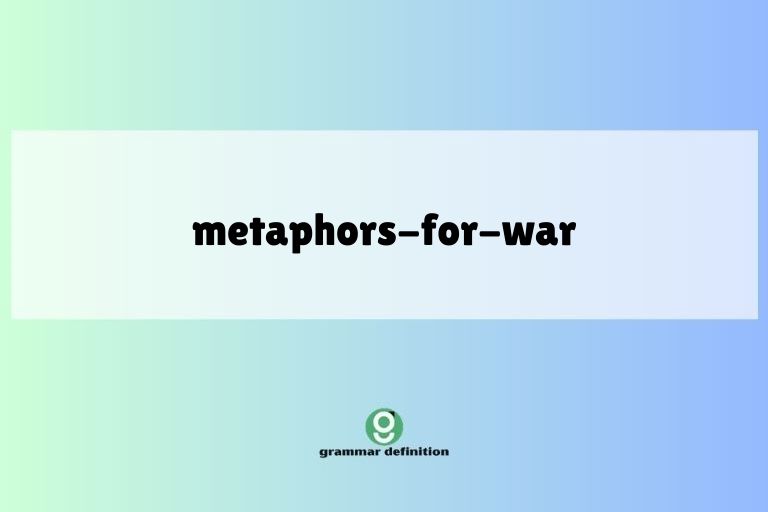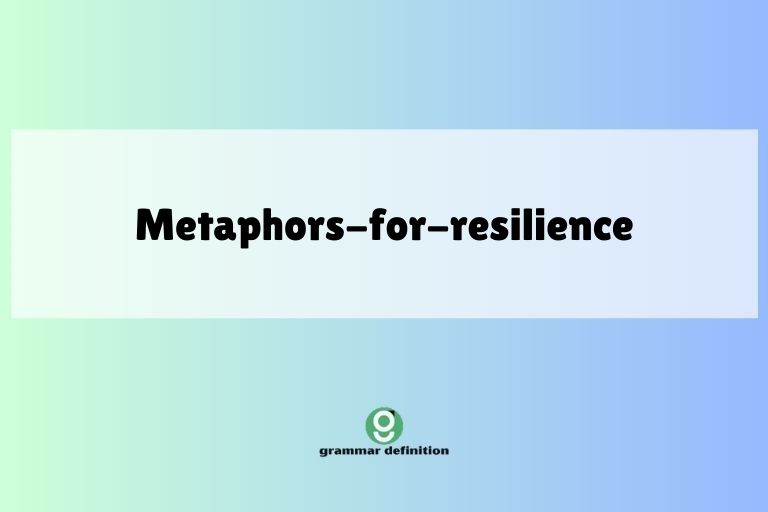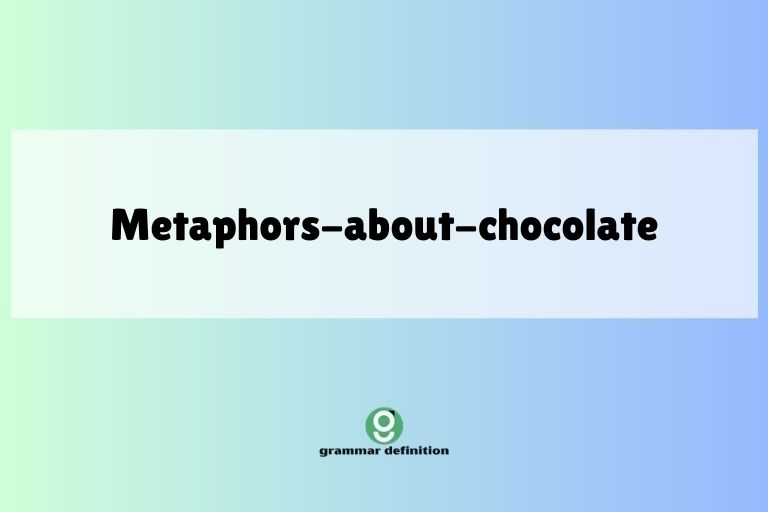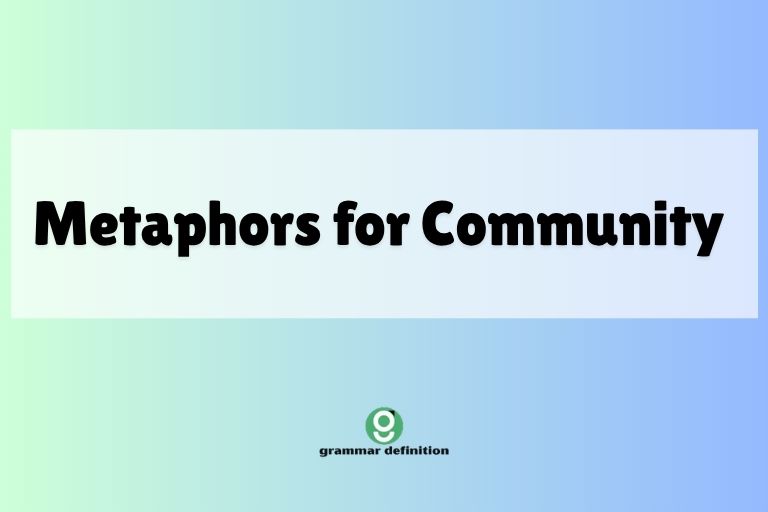Money Metaphors: Understanding Figurative Language in Finance
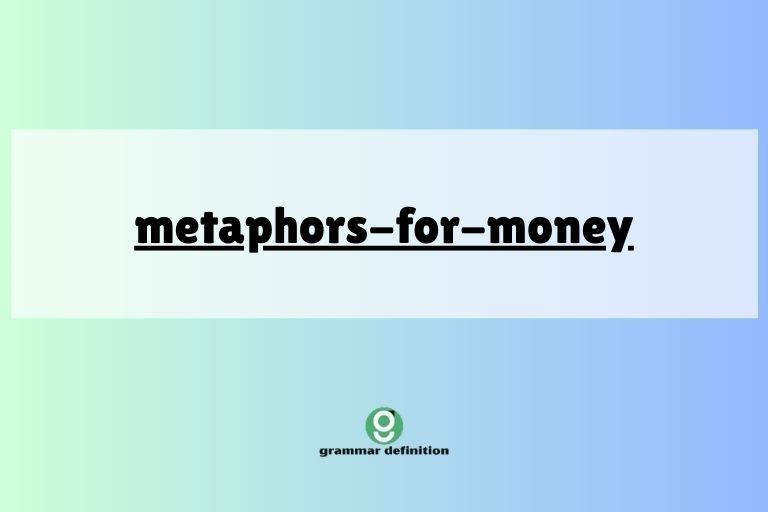
Understanding how we talk about money is crucial for anyone navigating the financial world. Metaphors, in particular, play a significant role in shaping our perceptions and understanding of complex economic concepts.
By exploring the different types of metaphors used to describe money, we can gain a deeper insight into how we think about wealth, debt, and financial security. This article aims to provide a comprehensive guide to money metaphors, exploring their structure, usage, and common pitfalls.
This guide will be beneficial for English language learners, business professionals, and anyone interested in understanding the subtle nuances of financial communication. Understanding these metaphors can improve your comprehension of financial articles, conversations, and even your own attitudes towards money.
Table of Contents
- Introduction
- Definition of Money Metaphors
- Structural Breakdown of Money Metaphors
- Types and Categories of Money Metaphors
- Examples of Money Metaphors
- Usage Rules for Money Metaphors
- Common Mistakes with Money Metaphors
- Practice Exercises
- Advanced Topics in Money Metaphors
- Frequently Asked Questions
- Conclusion
Definition of Money Metaphors
A metaphor is a figure of speech that directly compares two unrelated things without using “like” or “as.” It asserts that one thing *is* another, creating a vivid and often insightful connection. In the context of finance, money metaphors are used to describe money and financial concepts in terms of other, more easily understood ideas.
These metaphors help us grasp abstract economic principles by relating them to tangible, everyday experiences. Metaphors can be classified as conceptual metaphors, which are systematic ways of thinking about abstract concepts, or as individual, creative metaphors used for specific rhetorical effect.
The function of money metaphors is not just decorative; they actively shape how we perceive and interact with the financial world. They can influence our attitudes towards saving, spending, investing, and even our understanding of economic policy.
Structural Breakdown of Money Metaphors
Money metaphors, like other metaphors, consist of two primary components: the tenor and the vehicle. The tenor is the subject being described (in this case, money or a financial concept), and the vehicle is the concept used to describe it. The relationship between the tenor and the vehicle creates the metaphorical meaning. The effectiveness of a money metaphor depends on the shared characteristics or associations between the tenor and the vehicle. For example, when we say “money is flowing,” the tenor is money, and the vehicle is flowing water. The shared characteristic is movement or circulation. The underlying structure often relies on implicit comparisons, drawing on our existing knowledge and experiences to create a richer understanding. Metaphors can also be extended, developing a single metaphorical comparison over several sentences or even paragraphs, creating a more elaborate and nuanced understanding.
Types and Categories of Money Metaphors
Money metaphors can be categorized based on the vehicle used to describe money. Here are some common categories:
Money as Water
This is one of the most common metaphors. Money is often described as flowing, drying up, being liquid, or being a resource to be tapped.
This metaphor highlights the fluidity and essential nature of money.
Money as Food
This metaphor connects money with sustenance and survival. We talk about earning a living, feeding a family, or being hungry for success.
This emphasizes money’s role in meeting basic needs.
Money as a Weapon
This metaphor views money as a tool for power, defense, or attack. Phrases like “financial warfare,” “economic sanctions,” or “buying influence” fall into this category.
This highlights the competitive and strategic aspects of finance.
Money as a Plant
This metaphor emphasizes growth, cultivation, and investment. We talk about planting seeds, reaping rewards, or having a nest egg.
This focuses on the long-term potential of financial planning.
Money as a Journey
This metaphor frames financial planning as a path to be navigated, with goals to be reached and obstacles to be overcome. Phrases like “financial roadmap,” “staying on track,” or “getting derailed” are common examples.
This highlights the dynamic and goal-oriented nature of financial planning.
Money as a Burden
This metaphor depicts money as something heavy or difficult to manage. Phrases like “weighed down by debt,” “the burden of wealth,” or “money doesn’t buy happiness” reflect this perspective.
This highlights the potential downsides and responsibilities associated with money.
Examples of Money Metaphors
The following tables provide extensive examples of money metaphors categorized by type. Each example illustrates how a particular vehicle is used to describe money and financial concepts.
Table 1: Money as Water Metaphors
This table shows examples of how money is compared to water, emphasizing its fluidity, scarcity, and essential nature.
| Metaphor | Explanation |
|---|---|
| The money is flowing freely. | Indicates a strong and consistent stream of income. |
| The company is drowning in debt. | Illustrates that the company’s debt is overwhelming and difficult to manage. |
| His savings dried up after the crisis. | Shows that his savings were depleted due to an unexpected event. |
| She’s tapping into her savings. | Indicates she is using her savings for a specific purpose. |
| The investment is a cash cow. | Describes an investment that generates a consistent and reliable flow of income. |
| We need to stem the flow of losses. | Indicates a need to stop or reduce the amount of money being lost. |
| The funds are being channeled into new projects. | Shows that the money is being directed towards specific initiatives. |
| The market is awash with liquidity. | Indicates that there is a large amount of readily available money in the market. |
| They’re trying to dam up the outflow of capital. | Shows an attempt to prevent money from leaving the country or company. |
| His wealth is like a deep well. | Illustrates that he has a large and seemingly inexhaustible amount of money. |
| The company is hemorrhaging money. | Indicates that the company is losing money rapidly and uncontrollably. |
| The budget is a leaky faucet. | Shows that money is being wasted or lost due to inefficiencies. |
| We need to irrigate the economy with stimulus funds. | Indicates that government funds are being used to stimulate economic growth. |
| His business is sinking in debt. | Illustrates that his business is failing due to excessive debt. |
| The bailout was a flood of relief. | Shows that the financial assistance provided significant relief from a crisis. |
| The investment is like a wellspring of opportunity. | Indicates that the investment offers a continuous source of potential benefits. |
| They are navigating a sea of financial uncertainty. | Shows that they are facing a situation of great financial risk and unpredictability. |
| Her inheritance was a tidal wave of wealth. | Illustrates that she received a large and sudden influx of money. |
| The profits are cascading down to the shareholders. | Shows that the profits are being distributed to the shareholders in a flowing manner. |
| The company is trying to stay afloat. | Indicates that the company is struggling to survive financially. |
| The loan was a lifeline for the struggling business. | Shows that the loan provided essential support to help the business survive. |
| Their investments are a reservoir of future income. | Illustrates that their investments are a source of potential income in the future. |
| The company is trying to stem the tide of bankruptcy. | Indicates that the company is trying to prevent itself from going bankrupt. |
Table 2: Money as Food Metaphors
This table provides examples of how money is linked to sustenance, nourishment, and basic needs.
| Metaphor | Explanation |
|---|---|
| He earns a good living. | Indicates that he makes enough money to support himself comfortably. |
| She’s hungry for success. | Shows that she has a strong desire to achieve financial success. |
| They’re living paycheck to paycheck. | Illustrates that they spend all their income each month and have no savings. |
| The company is fattening its profits. | Indicates that the company is increasing its profits significantly. |
| The deal left a bad taste in his mouth. | Shows that he was unhappy with the outcome of the financial transaction. |
| He’s feasting on the company’s resources. | Indicates that he is excessively consuming the company’s assets. |
| The investment is a sweet deal. | Describes an investment that is very profitable and attractive. |
| She’s trying to digest the financial reports. | Shows that she is trying to understand and analyze the financial information. |
| The budget is lean and mean. | Indicates that the budget is efficient and cost-effective. |
| He’s starving for capital. | Illustrates that he urgently needs money to fund his business. |
| The company is feeding off government subsidies. | Shows that the company is relying on government assistance for its survival. |
| The market is ripe for investment. | Indicates that the market conditions are favorable for investing. |
| He’s trying to chew on the idea of investing. | Shows that he is considering the possibility of investing. |
| The profits are the fruit of their labor. | Illustrates that the profits are the result of their hard work. |
| The company is gorging on market share. | Indicates that the company is rapidly gaining a large portion of the market. |
| The merger left many employees with a bitter taste. | Shows that the merger had negative consequences for many employees. |
| He’s trying to savor his financial success. | Indicates that he is enjoying and appreciating his financial achievements. |
| The company is hungry for innovation. | Shows that the company has a strong desire to develop new and innovative products or services. |
| The new policy is hard to swallow. | Illustrates that the new policy is difficult to accept or implement. |
| They are nurturing their investments. | Shows that they are carefully managing and developing their investments. |
| The market is a feeding frenzy. | Indicates that there is intense competition and aggressive behavior in the market. |
| He’s trying to get a piece of the pie. | Illustrates that he wants to share in the profits or benefits of a particular venture. |
| The company is reaping what it sowed. | Shows that the company is experiencing the consequences of its past actions. |
Table 3: Money as a Weapon Metaphors
This table shows examples of how money is viewed as a tool for power, defense, or aggression.
| Metaphor | Explanation |
|---|---|
| They launched a hostile takeover. | Indicates that they attempted to acquire a company against its will. |
| Economic sanctions were imposed. | Shows that economic measures were used to punish a country. |
| He’s using his wealth to buy influence. | Illustrates that he is using money to gain power and control. |
| They’re engaging in financial warfare. | Indicates that they are using financial tactics to gain a competitive advantage. |
| The company is building a war chest of cash. | Shows that the company is accumulating a large amount of money for future acquisitions or defense. |
| They’re trying to defend their market share. | Indicates that they are trying to protect their position in the market from competitors. |
| The merger was a strategic strike. | Shows that the merger was a calculated move to gain a competitive advantage. |
| They’re trying to shield themselves from liability. | Indicates that they are taking measures to protect themselves from legal or financial risks. |
| The company is arming itself with patents. | Shows that the company is acquiring patents to protect its intellectual property. |
| He’s wielding his financial power. | Illustrates that he is using his wealth to exert control or influence. |
| They’re trying to conquer new markets. | Indicates that they are attempting to expand their business into new areas. |
| The investment is a defensive play. | Shows that the investment is designed to protect capital during uncertain times. |
| He’s using his wealth as a battering ram. | Illustrates that he is using his money aggressively to achieve his goals. |
| They launched a price war. | Indicates that they started a competition based on lowering prices. |
| The company is fortifying its financial position. | Shows that the company is strengthening its financial stability. |
| They’re trying to undermine the competition. | Indicates that they are attempting to weaken their competitors. |
| The lawsuit was a financial blow. | Shows that the lawsuit caused significant financial damage. |
| He’s using his wealth as a weapon against his rivals. | Illustrates that he is using his money to harm or defeat his competitors. |
| The company is trying to neutralize the threat of bankruptcy. | Indicates that the company is taking steps to eliminate the risk of going bankrupt. |
| They’re building a financial fortress. | Shows that they are creating a strong and secure financial position. |
| The new regulations are a financial minefield. | Indicates that the new regulations are complex and potentially dangerous. |
| He’s trying to topple the industry leader. | Illustrates that he is attempting to overthrow the dominant company in the industry. |
| The company is deploying its capital strategically. | Shows that the company is using its money in a planned and deliberate manner to achieve its goals. |
Table 4: Money as a Plant Metaphors
This table presents examples of how money is associated with growth, cultivation, and investment.
| Metaphor | Explanation |
|---|---|
| She has a nest egg for retirement. | Indicates that she has saved money specifically for retirement. |
| He’s planting seeds for future success. | Shows that he is making investments that will yield benefits in the future. |
| The business is blossoming. | Illustrates that the business is growing and thriving. |
| They’re reaping the rewards of their hard work. | Indicates that they are enjoying the benefits of their efforts. |
| The investment is bearing fruit. | Shows that the investment is producing positive results. |
| He’s nurturing his investments. | Indicates that he is carefully managing and developing his investments. |
| The company is trying to cultivate new markets. | Shows that the company is attempting to develop new customer bases. |
| The economy is sprouting new businesses. | Illustrates that new businesses are emerging and growing. |
| He’s pruning his portfolio. | Indicates that he is selling off underperforming assets. |
| The company is trying to grow its revenue. | Shows that the company is attempting to increase its sales. |
| They’re trying to harvest their profits. | Indicates that they are realizing the gains from their investments. |
| The investment is a budding opportunity. | Shows that the investment has the potential for future growth. |
| He’s trying to sow the seeds of innovation. | Illustrates that he is promoting new ideas and technologies. |
| The company is branching out into new areas. | Indicates that the company is expanding its operations. |
| They’re trying to cultivate a strong brand. | Shows that they are working to develop a positive reputation. |
| The economy is in full bloom. | Indicates that the economy is thriving and prosperous. |
| He’s trying to weed out inefficiencies. | Illustrates that he is eliminating waste and improving efficiency. |
| The company is trying to root out corruption. | Shows that the company is attempting to eliminate dishonest practices. |
| They’re trying to germinate new ideas. | Indicates that they are developing and promoting new concepts. |
| The market is fertile ground for investment. | Shows that the market is conducive to successful investing. |
| He’s trying to let his investments take root. | Illustrates that he is allowing his investments time to grow and develop. |
| The economy is bearing the fruits of deregulation. | Shows that the economy is experiencing the consequences of deregulation policies. |
| They’re trying to cultivate a culture of innovation. | Indicates that they are working to create an environment that fosters creativity and new ideas. |
Table 5: Money as a Journey Metaphors
This table presents examples of how financial planning is framed as a path with goals and obstacles.
| Metaphor | Explanation |
|---|---|
| He’s on the road to financial independence. | Indicates that he is making progress towards becoming financially self-sufficient. |
| The company is charting a new course. | Shows that the company is developing a new strategy or direction. |
| They’re navigating a challenging market. | Illustrates that they are dealing with difficult conditions in the market. |
| The budget is a roadmap for the future. | Indicates that the budget provides a plan for future financial activities. |
| He’s trying to stay on track with his savings goals. | Shows that he is making consistent progress towards his savings targets. |
| The company is reaching new milestones. | Indicates that the company is achieving significant accomplishments. |
| They’re trying to steer the company in the right direction. | Shows that they are guiding the company towards success. |
| The investment is a long-term journey. | Illustrates that the investment requires patience and persistence. |
| He’s trying to avoid financial pitfalls. | Indicates that he is taking precautions to avoid financial problems. |
| The company is embarking on a new venture. | Shows that the company is starting a new project or business. |
| They’re trying to pave the way for future growth. | Indicates that they are creating conditions that will support future expansion. |
| The market is a roller coaster. | Shows that the market is volatile and unpredictable. |
| He’s trying to climb the corporate ladder. | Illustrates that he is seeking promotions and advancement in his career. |
| The company is at a crossroads. | Indicates that the company is facing a critical decision that will determine its future. |
| They’re trying to forge a new path to success. | Shows that they are developing an innovative approach to achieving their goals. |
| The economy is on a recovery path. | Indicates that the economy is gradually improving after a downturn. |
| He’s trying to chart a course through turbulent times. | Illustrates that he is navigating difficult and uncertain circumstances. |
| The company is trying to bridge the gap between expectations and reality. | Shows that the company is attempting to reconcile optimistic projections with actual performance. |
| They’re trying to blaze a trail in the industry. | Indicates that they are pioneering new approaches and setting trends. |
| The market is a minefield of risks. | Shows that the market is fraught with potential dangers and uncertainties. |
| He’s trying to navigate the complexities of the tax code. | Illustrates that he is dealing with the intricate and challenging aspects of tax regulations. |
| The company is trying to stay the course despite challenges. | Shows that the company is maintaining its strategy despite facing difficulties. |
| They’re trying to reach the summit of success. | Indicates that they are striving to achieve their highest goals. |
Usage Rules for Money Metaphors
While money metaphors can add richness and clarity to financial communication, it’s essential to use them judiciously. Overuse or inappropriate use can lead to confusion or misinterpretation.
A key rule is to ensure the metaphor is relevant and understandable to the audience. Consider the context and the audience’s familiarity with financial concepts.
Avoid mixed metaphors, where two or more incompatible metaphors are combined, creating a nonsensical image. For example, saying “He’s planting seeds while navigating a stormy sea” combines two unrelated metaphors and can confuse the listener.
Maintain consistency within a metaphor. If you start with the idea of money as water, continue using water-related imagery to avoid jarring shifts in meaning.
Be aware of the potential cultural differences in interpreting metaphors. Some metaphors may have different connotations or be less familiar in certain cultures.
Finally, use metaphors sparingly and strategically to enhance understanding, not to obscure it.
Common Mistakes with Money Metaphors
Several common mistakes can undermine the effectiveness of money metaphors. One frequent error is using clichéd metaphors that have lost their impact through overuse.
Phrases like “cash cow” or “nest egg,” while still understandable, lack the freshness and insight of more original metaphors. Another mistake is using mixed metaphors, as mentioned earlier.
This creates a confusing and often unintentionally humorous effect. A further error is using metaphors that are too complex or obscure for the audience to understand.
The goal of a metaphor is to clarify, not to confuse. Finally, failing to consider the connotations of the vehicle can lead to unintended implications.
For example, describing a company as “bleeding money” might create a sense of panic, even if the financial situation is not dire.
Table 6: Correct vs. Incorrect Money Metaphors
This table provides examples of correct and incorrect usage of money metaphors, highlighting common errors and how to avoid them.
| Incorrect | Correct | Explanation |
|---|---|---|
| He’s planting seeds while navigating a stormy sea (Mixed Metaphor). | He’s planting seeds for future success. | Avoid mixing unrelated metaphors. |
| The company is drowning in a sea of opportunities (Confusing Connotation). | The company is navigating a sea of opportunities. | Ensure the connotation of the vehicle aligns with the intended meaning. |
| The budget is a cash cow, feeding off the government (Inconsistent Metaphor). | The budget is a cash cow. | Maintain consistency within the chosen metaphor. |
| He’s climbing the ladder to financial independence while also trying to stay afloat (Mixed Metaphor). | He’s on the road to financial independence. | Avoid combining incompatible images. |
| The market is a jungle gym of financial instruments (Obscure Metaphor). | The market is a roller coaster. | Use metaphors that are easily understood by the audience. |
| The company is a cash cow, but it’s also starving for capital (Contradictory Metaphor). | The company is a cash cow. | Avoid using metaphors that contradict each other. |
| He’s trying to build a nest egg while also engaging in financial warfare (Inconsistent Metaphor). | He’s building a nest egg for retirement. | Ensure the metaphor aligns with the specific financial goal. |
| The economy is a fertile desert (Contradictory Terms). | The market is fertile ground for investment. | Avoid using terms that contradict each other within the metaphor. |
| The merger was a sweet and sour symphony (Confusing Combination). | The merger was a sweet deal. | Keep the metaphor simple and straightforward. |
| He’s trying to harvest his nest egg (Misapplication). | He’s tapping into his nest egg. | Use the metaphor in a way that aligns with its conventional meaning. |
Practice Exercises
Test your understanding of money metaphors with these exercises.
Exercise 1: Identifying Money Metaphors
Identify the money metaphor in each sentence and explain its meaning.
Table 7: Exercise 1 – Identifying Money Metaphors
| Question | Answer |
|---|---|
| 1. The company is drowning in debt. | The metaphor is “drowning in debt,” meaning the company’s debt is overwhelming. |
| 2. He’s planting seeds for future success. | The metaphor is “planting seeds,” meaning he’s making investments that will yield benefits later. |
| 3. The market is a roller coaster. | The metaphor is “roller coaster,” meaning the market is volatile and unpredictable. |
| 4. She has a nest egg for retirement. | The metaphor is “nest egg,” meaning she has saved money specifically for retirement. |
| 5. They launched a hostile takeover. | The metaphor is “hostile takeover,” meaning they attempted to acquire a company against its will. |
| 6. He earns a good living. | The metaphor is “earns a good living,” meaning he makes enough money to support himself comfortably. |
| 7. The investment is bearing fruit. | The metaphor is “bearing fruit,” meaning the investment is producing positive results. |
| 8. They’re living paycheck to paycheck. | The metaphor is “living paycheck to paycheck,” meaning they spend all their income each month. |
| 9. The bailout was a flood of relief. | The metaphor is “flood of relief,” meaning the financial assistance provided significant relief. |
| 10. He is trying to stay afloat. | The metaphor is “stay afloat,” meaning he is trying to survive financially. |
Exercise 2: Creating Money Metaphors
Complete the following sentences with an appropriate money metaphor.
Table 8: Exercise 2 – Creating Money Metaphors
| Question | Answer |
|---|---|
| 1. The company is __________ its profits. | The company is fattening its profits. |
| 2. He’s __________ for capital. | He’s starving for capital. |
| 3. The market is __________ for investment. | The market is ripe for investment. |
| 4. They’re trying to __________ new markets. | They’re trying to conquer new markets. |
| 5. The new regulations are a financial __________. | The new regulations are a financial minefield. |
| 6. The company is __________ new businesses. | The economy is sprouting new businesses. |
| 7. The investment is a __________ opportunity. | The investment is a budding opportunity. |
| 8. He’s trying to __________ inefficiencies. | He’s trying to weed out inefficiencies. |
| 9. The economy is on a __________ path. | The economy is on a recovery path. |
| 10. He wants to __________ his investments. | He wants to nurture his investments. |
Advanced Topics in Money Metaphors
For advanced learners, exploring the cultural and historical contexts of money metaphors can provide deeper insights. Different cultures may use different metaphors to describe money, reflecting their unique values and beliefs.
For example, some cultures may emphasize the communal aspect of wealth, while others focus on individual accumulation. Studying the evolution of money metaphors over time can also reveal changing attitudes towards finance.
In addition, analyzing the use of money metaphors in political discourse can shed light on how language is used to shape public opinion on economic issues. Researching the work of cognitive linguists like George Lakoff and Mark Johnson can provide a theoretical framework for understanding the role of metaphors in shaping our thought processes.
Frequently Asked Questions
Here are some frequently asked questions about money metaphors:
- What is the difference between a metaphor and a simile?
A metaphor directly equates two things, while a simile uses “like” or “as” to make a comparison. For example, “Money is water” is a metaphor, while “Money is like water” is a simile. Metaphors are generally considered more impactful because they assert a stronger connection.
- Why are money metaphors so common?
Money metaphors are common because they help us understand abstract financial concepts by relating them to more tangible and familiar experiences. They make complex ideas more accessible and memorable.
- Can money metaphors be misleading?
Yes, if used carelessly. They can oversimplify complex situations or create unintended emotional responses. It’s important to choose metaphors carefully and be aware of their potential limitations.
- How can I improve my understanding of money metaphors?
Read widely on financial topics, paying attention to the language used. Analyze how different metaphors are used in various contexts and consider their implications. Practice identifying and interpreting metaphors in everyday conversations and articles.
- Are there any money metaphors that should be avoided?
Avoid clichéd metaphors that have lost their impact, as well as metaphors that are culturally insensitive or could be easily misinterpreted. Be mindful of the connotations of the vehicle and choose metaphors that accurately reflect the intended meaning.
- How do money metaphors influence our financial decisions?
Money metaphors can shape our attitudes towards risk, reward, and financial security. For example
, if we think of money as a “war chest,” we may be more inclined to take aggressive investment strategies. Conversely, if we view money as a “nest egg,” we may be more risk-averse and prioritize long-term security.
Conclusion
Money metaphors are a powerful tool for understanding and communicating complex financial concepts. By recognizing the different types of metaphors, understanding their structure, and using them judiciously, we can improve our financial literacy and make more informed decisions.
While metaphors can be helpful, it’s important to be aware of their limitations and potential for misinterpretation. As you continue to explore the world of finance, pay attention to the language used and consider how metaphors are shaping your understanding.
This awareness will not only enhance your comprehension but also empower you to communicate more effectively about money and financial matters.

